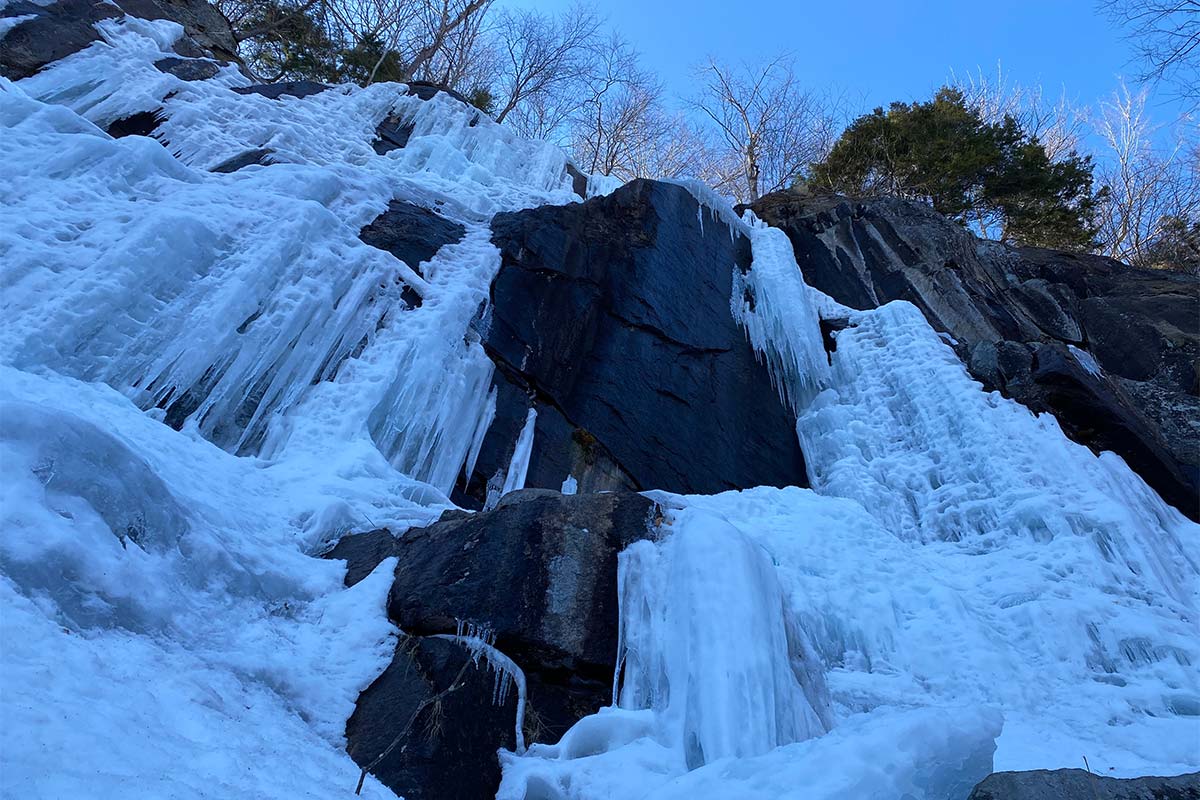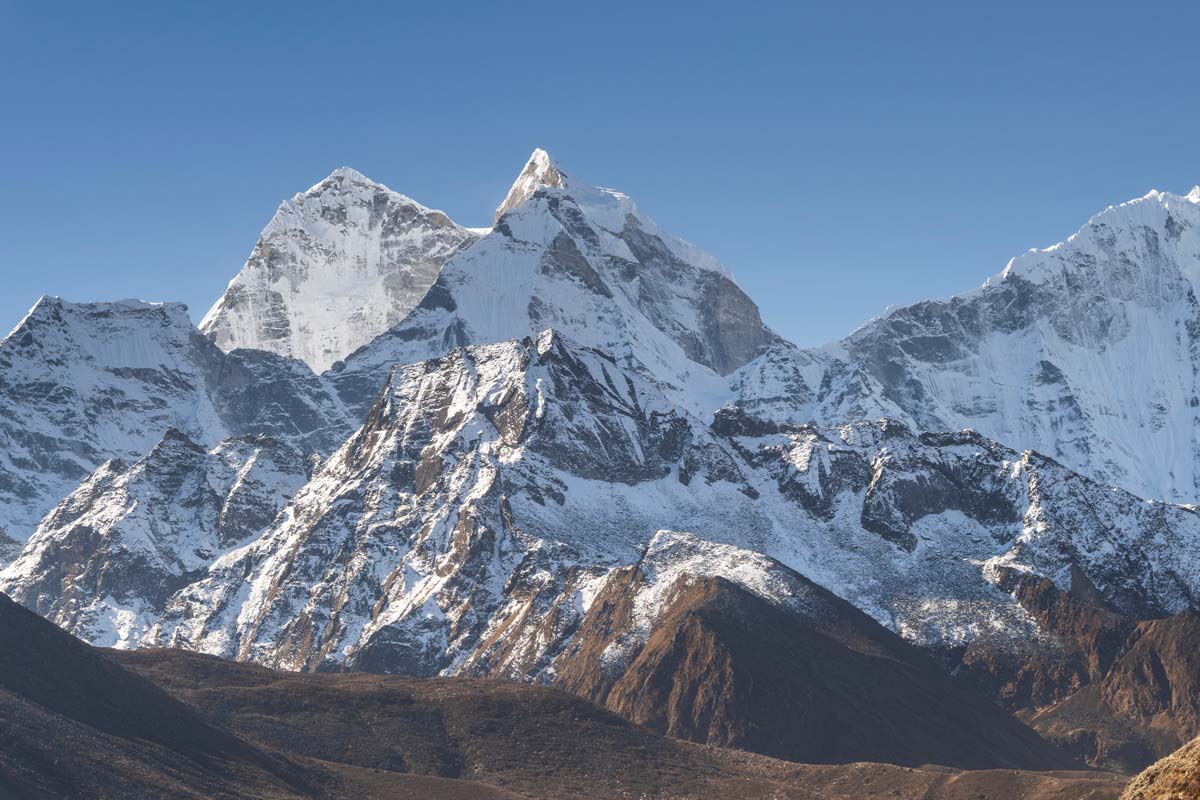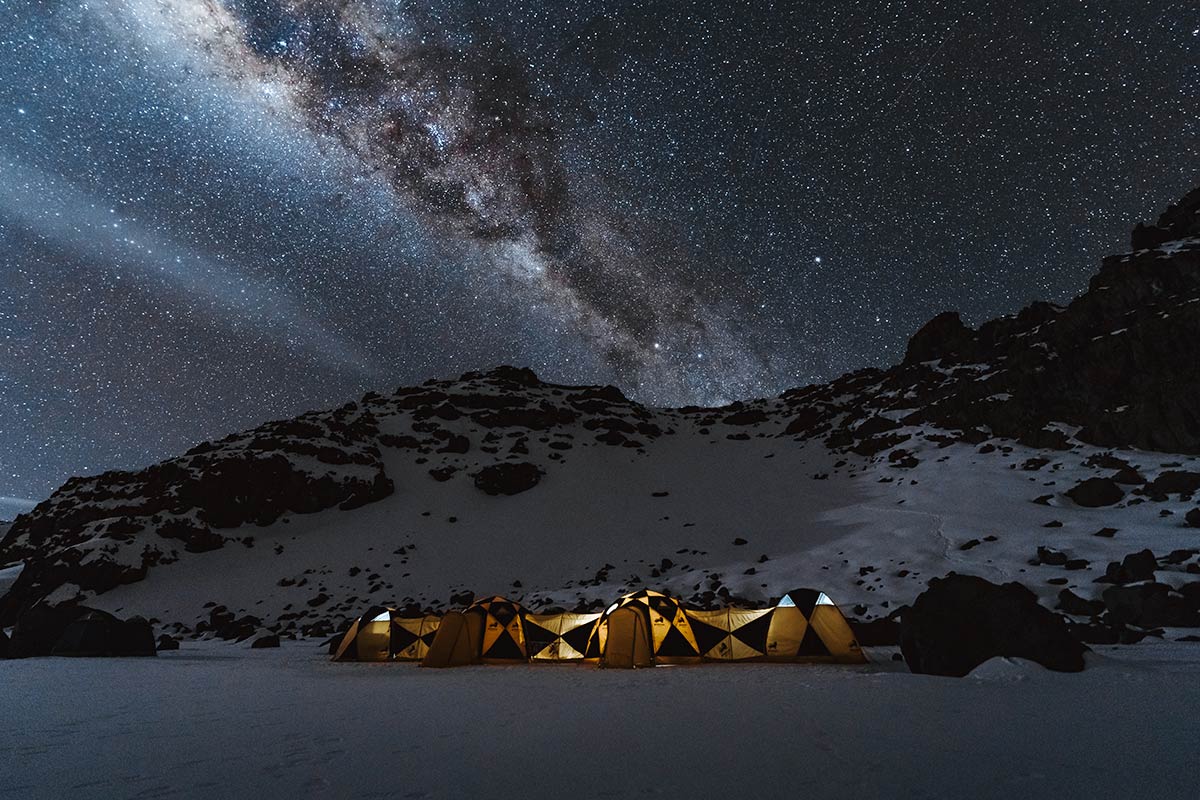The UIAA Ice Climbing World Tour intensifies in the month of January with World Cup events in South Korea, France and Switzerland. Preparations for the latter event (26-28 January) has been impacted by the high winter temperatures in the Alps. Safety concerns have led the organisers to replace the ice blocks with wooden fixtures, the first time this has been necessary in the event’s twenty-year history.
During the recent UIAA Climate Change Summit, held as part of the federation’s General Assembly in Canada, a presentation was made on the implications of warmer winters for ice climbing guides. The talk was given by Dr Graham McDowell of the University of Calgary. Dr McDowell focused on a case study from the Mount Washington Valley, USA and in particular the popular ice climbing route of Frankenstein Cliff. The area is renowned for the quality of its conditions with nearly 20 guide services and over 40 guides supporting this major ice climbing destination.
The aims of the study were to characterise how climate change is affecting climbing conditions and the length of the season in Mount Washington Valley (summit at 1916m) before clarifying how guides are affected by, and responding to, these changes. Analysis included observed changes, projected changes and lived experiences. It used photos (over 300 photos from the same vantage point over a twenty year period), data analysis and modelling and information from focus groups.
Variability across length of the season
The study examined the relationship between the season length and temperature. Modelling predicted a significant shortening of the ice climbing season by the middle of the 21st century. By the end of the century, the season is likely to be reduced by two thirds of the current average of just under 100 days (albeit over the past twenty years there has been a significant degree of variability from season to season).
Midwinter conditions are proving increasingly spring-like, reducing reliability and increasing hazards. More frequent occurrences of hazards like rock falls and ice collapses would also increase risk. Furthermore it was noted that changing technical standards (using mixed routes, climbing thinner ice earlier in the season) often mask perceptions of climate-change related issues and the length of the season.
How guides are adapting
Guides are having to be agile, changing locations, activities and avoiding overcrowding routes. For highly skilled smaller, independent guide services with more scope for adaptability this is a little easier. Large guiding services, perhaps focused on large introductory courses, are less able to adapt programmes to more complex or harder to find routes. The magnitude of future changes will threaten guides’ ability to adapt effectively. Guides are adaptable to changes but adaptations increase operating costs and the burden of work, and can be constrained by business models and a client’s ability and interests.
The methodology used in this study can be adapted to access changes, impacts and adaption in other ice climbing areas, providing a basis for devising an informed response to climate change.
About the study
The study by Dr Graham McDowell (University of Calgary), project leader Jimmy Voorhis (AAC), Dr Elizabeth Burakowski (University of New Hampshire) and Taylor Luneau (AAC) was supported by funding from the American Alpine Club (AAC), the Petzl Fondation and National Geographic.
Image: Stock Library



